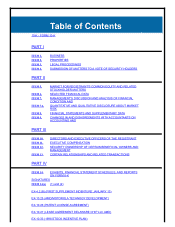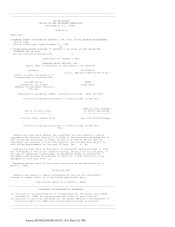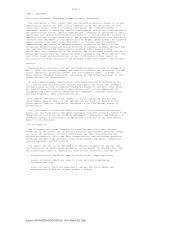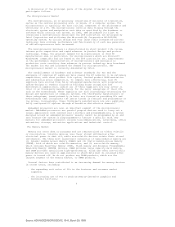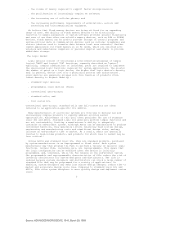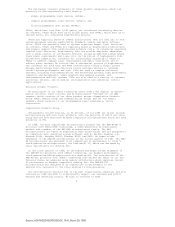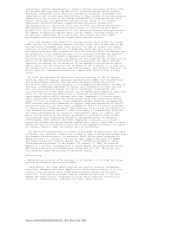AMD 1998 Annual Report Download - page 12
Download and view the complete annual report
Please find page 12 of the 1998 AMD annual report below. You can navigate through the pages in the report by either clicking on the pages listed below, or by using the keyword search tool below to find specific information within the annual report.Vantis Corporation
In 1997, we transferred our operations relating to the design, development
and marketing of programmable logic devices (excluding bipolar products) to
Vantis, a wholly owned subsidiary of AMD. Vantis does not fabricate any of the
silicon wafers used in the production of its products. As a result, Vantis
relies on us and others for manufacturing. In addition, Vantis relies on us
for certain administrative and other services.
Vantis products ($205 million, or 8 percent, of our 1998 net sales) include
both complex and simple, high performance CMOS (complementary metal oxide
semiconductor) PLDs.
PLDs are standard products purchased by system manufacturers in an
unprogrammed or blank state, which can be programmed by each system
manufacturer to perform a variety of specific logic functions. Certain PLDs,
including ours, are reprogrammable such that the logic configuration can be
modified after the device is initially programmed, and, in many cases, while
the PLD remains in the end-product system. PLDs are used by manufacturers of
telecommunications and networking systems, computers and industrial and other
electronic systems to reduce product development time and costs and to improve
system performance and reliability.
Vantis has developed a broad product line of low-density and high-density
PLD products, including SPLDs and CPLDs, and is currently developing a new
line of FPGA products. PLDs are used in complex electronic systems, including
telecommunications and networking systems, high performance computers and
peripherals, video graphics and imaging systems, and instrumentation and test
systems. PLDs are also used in a variety of consumer electronic devices, and
in medical instrumentation and industrial control applications.
Customers utilizing PLDs generally use special software "fitters," usually
provided by the suppliers of the PLDs, that allow electrical circuit designs
to be implemented using CPLDs for FPGAs. Vantis provides its PLD customers
with software fitters which it has developed internally or has licensed from
third parties. In 1997, Vantis initiated efforts to internally manage and
control the development and maintenance of software fitters for our products.
However, Vantis is dependent on third parties for certain software that is
bundled with Vantis' software for sale to customers. We cannot give any
assurance that our efforts to internally develop and maintain the software
needed to sell and support its products will be successful. If Vantis is
unable to continue to obtain appropriate software and improvements from third
parties, to license alternative software from another third party, or to
successfully develop and maintain its own software internally, this could
materially and adversely affect Vantis' business, including the timing of new
or improved product introductions, which could have a material adverse effect
on our business.
In January 1999, we successfully completed a consent solicitation from
registered holders of our $400,000,000 aggregate principal amount of 11
Percent Senior Secured Notes due 2003, which were issued pursuant to an
indenture dated August 1, 1996 between AMD and United States Trust Company of
New York (the Indenture). Upon receipt of the required consents, we adopted
amendments to the Indenture which permit Vantis to adopt equity-based
incentive plans for its directors, officers and employees. The amendments also
modify certain restrictive covenants contained in the Indenture to permit,
among other things, an initial public offering of all or any portion of our
equity interests in Vantis or an issuance or exchange of Vantis' equity
interests for interests in other entities without compliance with certain
financial tests previously set forth in the Indenture.
Research and Development; Manufacturing Technology
Our expenses for research and development were $567 million in 1998, $468
million in 1997 and $401 million in 1996. These expenses represented 22
percent of net sales in 1998, 20 percent of net sales in 1997 and 21 percent
of net sales in 1996. Our research and development expenses are charged to
operations as incurred. Most of our research and development personnel are
integrated into the engineering staff.
9
Source: ADVANCED MICRO DEVIC, 10-K, March 29, 1999


